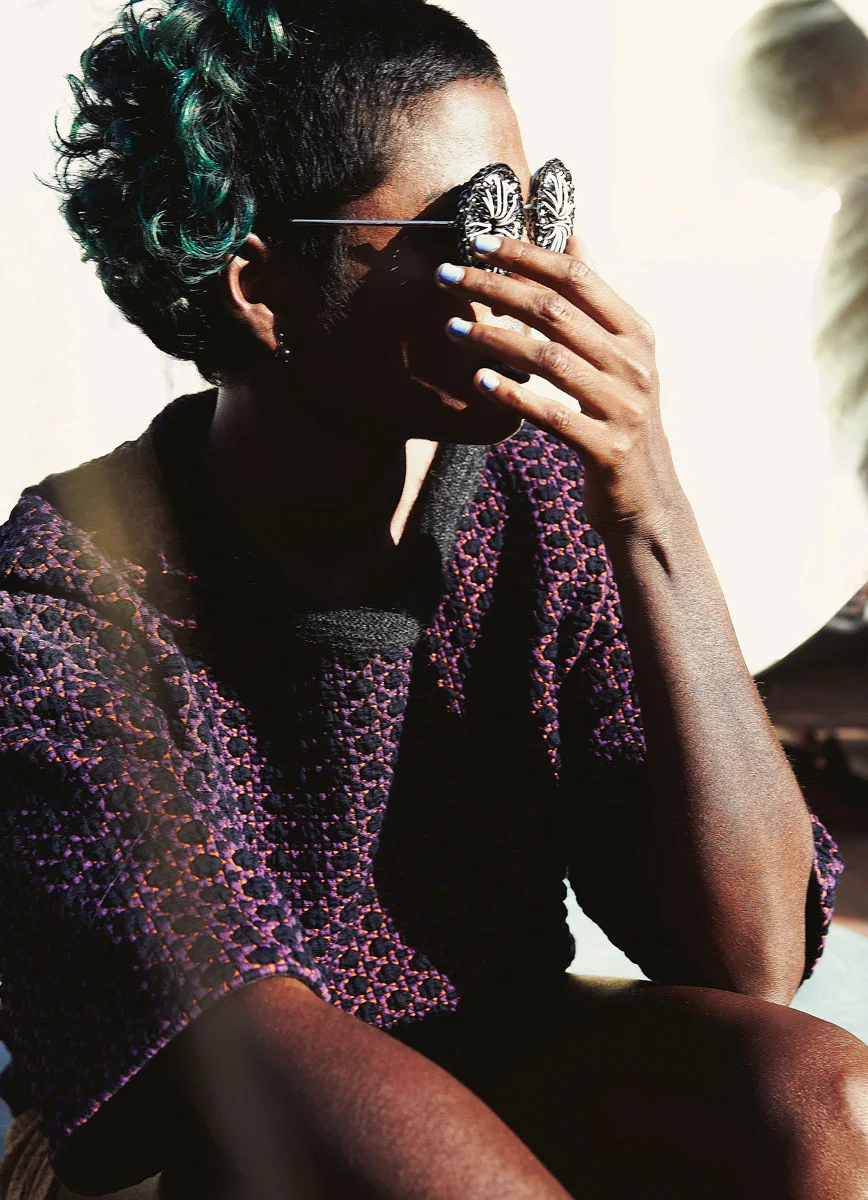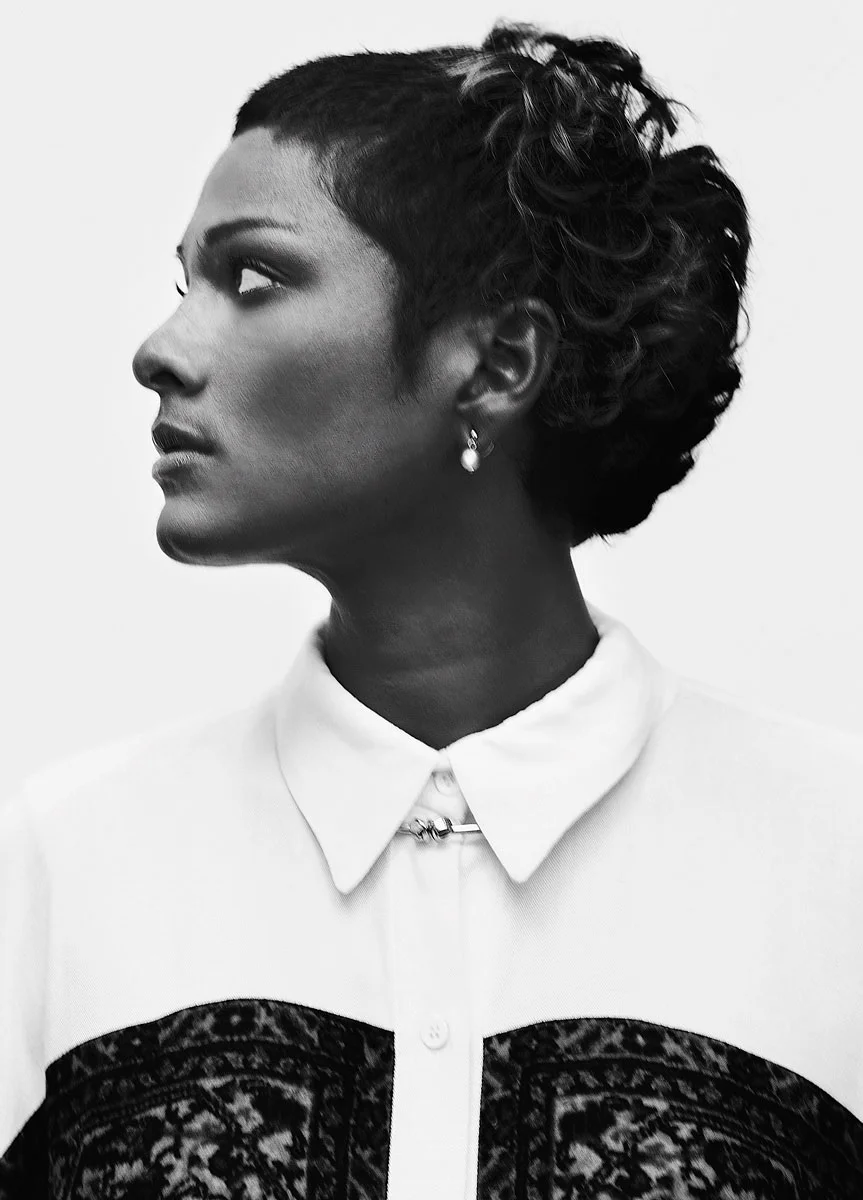I guess Jahcoozi listeners will think Perera Elsewhere is the whitest music I’ve ever made. Even with Jahcoozi, the music we make is kind of white, but it’s also black. And there shouldn’t be demographics in music culture, but there is, right? It’s the most rock-y, guitar-y, emo music I’ve ever made, and I didn’t even listen to music like that when I was growing up. Maybe because when I went to grunge and indie clubs in London when I was a kid, I felt of out of context. Soundsystem culture, jungle, and drum and bass felt much newer, multicultural. I recorded a lot of the album in my apartment in Alexanderplatz with a really good studio mic that Oren [Gerlitz] lent me, and a guitar I bought for my boyfriend at a flea market in Marseilles.
Maybe I would have never made the album if I didn’t buy that guitar.
I just picked it up and started recording, and when I listened back, I really liked the space and minimalism of the sound. I found it touching and a real contrast to Jahcoozi, which always has a lot of stuff going on. There are distinct elements of the sensational and voyeuristic in Jahcoozi, which shocks people, and my friends are shocked by this new music as well, but for the opposite reasons! This was the first time that I was in charge of both the melodies and vocal, you know? I was really amazed that just a guitar and voice could sound so good. I found that the ambience and simplicity of the music can lead to a much more emotional experience—it has an instant effect. Maybe that’s also why I made this album. So many people make electronic music these days that the sounds are almost interchangeable, and maybe it would’ve been easier to just carry on doing that and make lots of money on tour, but when I sat down to write it, this stuff was just different and came easier to me. The silence in the sound is as important as the music.
If you look at the way tracks are being mastered these days, they’re compressed the shit out of, especially since electronic music has become so horribly mainstream in pop modes that people aren’t listening to it on proper sound systems. A proper system has room to push loads of frequencies. You can hear the space, the warmth in this record. It’s intimate. It’s lo-fi. You can hear my living room. You hear all the creaks. You can hear what’s happening in the street basically. With this warm sound, you can do more Blue Note stuff, you know, go in between tones. Towards the end of the album, I started to incorporate more beats and stuff into the tracks, ʼcause I basically taught myself how to produce as I went along. And I think my second one will be different to this as well, just ’cause it’s a learning process, you know? It’s never complete. Perera Elsewhere is a record of a process; a three-year process.
Photographer: Patrick Houi for Ohlsson.de. Stylist: Paul Maximilian Schlosser.


